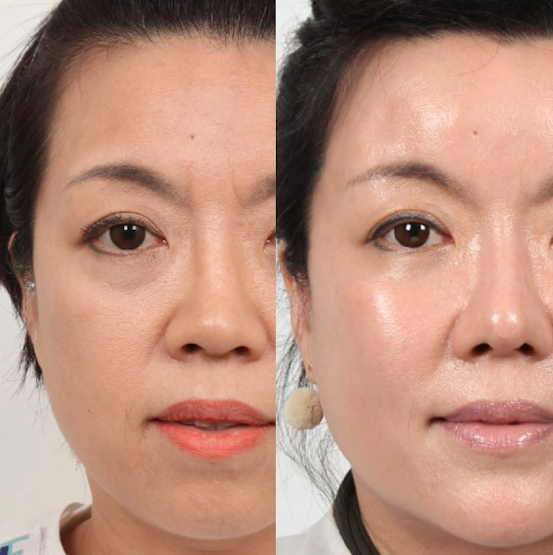700. Total Facial Plastic Surgery
Facial plastic surgery refers to all surgical and non-surgical procedures related to the face. While most people may think only of eye, nose, contour, or lifting procedures, true facial surgery encompasses a much wider spectrum.
From front to back (surface to deep), it includes:
– Skin surgery,
– Fat surgery,
– Fascial surgery,
– Muscle surgery, and
– Bone surgery.
From top to bottom, we divide the face into:
– Upper face (e.g., forehead surgery – see 660mm),
– Midface (e.g., cheekbone surgery – 670mm),
– Lower face (e.g., jaw surgery – 680mm).
By anatomical region:
– Eye surgery (620mm),
– Nose surgery (630mm),
– Mouth surgery (640mm),
– Ear surgery (650mm).
Choosing the right procedure shouldn't rely solely on the patient’s request, but must be based on objective analysis by the surgeon, then matched with the patient's goals.
For example, if a patient wants deeper, symmetrical double eyelids due to asymmetry, but has protruding eyes causing the imbalance, and this isn’t acknowledged or understood, the eyelid surgery alone will likely fail. The crease may loosen or become asymmetrical. In this case, the surgeon must first correct the eye protrusion and asymmetry, then perform double eyelid surgery 3 months later for stable, symmetrical results.
Another case:
If a patient wants a facelift to look younger due to sagging skin, but has prominent cheekbones and angular, asymmetrical jawbones, lifting alone won’t be effective. In such cases, combining facial contouring surgery (to reduce cheekbones and jaw size) with the facelift maximizes the effect—allowing more excess skin to be removed and enhancing the lifting vector, especially since facial ligaments are already detached during contouring.
Without this insight, performing a facelift alone based on the patient’s wish could result in poor outcomes and low satisfaction.
Another example:
A patient with mandibular prognathism comes for jaw surgery but wants only a single-jaw (mandibular-only) surgery to save cost. If the surgeon follows this without checking the airway on CT, the patient may suffer sleep apnea post-op. An expert should analyze airway width and recommend double jaw surgery if needed. Also, since double jaw surgery can widen the nose, patients should be informed of possible changes and consider simultaneous rhinoplasty.
Using submental intubation, both procedures can be done together. Instead of synthetic implants, rib cartilage particles can be used to shape the nose and stored for future touch-ups like cartilage fillers. This prevents nasal collapse, addresses sleep apnea, and allows for future refinement, improving both safety and satisfaction.
Facial plastic surgery is not just about the outer layer—it requires understanding the anatomy from bone to skin, from upper to lower face, across eyes, nose, mouth, ears. A truly complete approach requires knowledge of ophthalmology, ENT, and dentistry to ensure precise results and proper management of any side effects.
[Facial plastic surgery is total surgery—from the inside out, top to bottom, with comprehensive anatomical and interdisciplinary knowledge.]
– 700 mm Growing Pine Tree 🌲


























